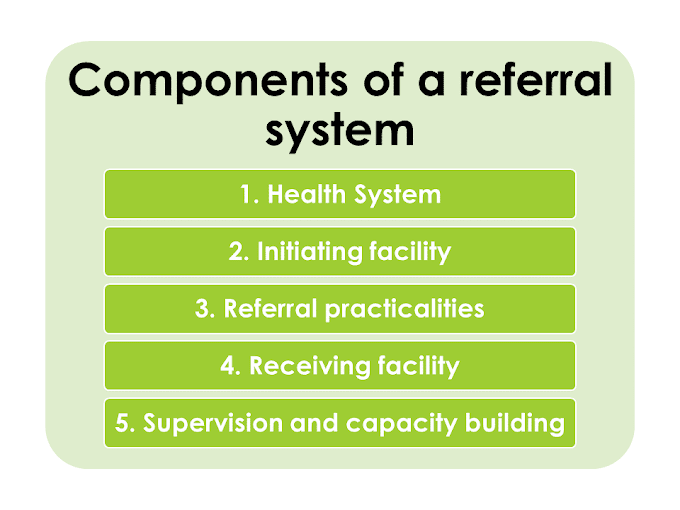Hormonal contraceptives when properly used are the most effective spacing methods of contraception. Oral contraceptives of the combined type are almost 100 per cent effective in preventing pregnancy. They provide the best means of ensuring spacing between one childbirth and another.
Classification of Hormonal Contraceptives
Hormonal contraceptives currently in use and/ or under study may be classified as follows:
[A] Oral pills
- Combined pill
- Progestogen only pill
- Post-coital pill
- Once-a-month pill
- Male pill
[B] Depot formulations (slow release)
- Injectables
- Subcutaneous implants
- Vaginal rings
[A] ORAL PILLS
1. Combined Pill
The combined pill is one of the major spacing methods of contraception. At the present time, most formulations of the combined pill contain no more than 30-35 mcg of a synthetic oestrogen, and 0.5 to 1.0 mg of a progestogen.
The pill is given orally for 21 consecutive days beginning on the 5th day of the menstrual cycle, followed by a break of 7 days during which period menstruation occurs. When the bleeding occurs, this is considered the first day of the next cycle. The bleeding which occurs is not like normal menstruation, but is an episode of uterine bleeding from an incompletely formed endometrium caused by the withdrawal of exogenous hormones. Therefore it is called "withdrawal bleeding" rather than menstruation. Further, the loss of blood which occurs is about half that occurring in a women having ovulatory cycle. If bleeding does not occur, the women is instructed to start the second cycle one week after the preceding one. Ordinarily, the women "menstruates" after the second course of pill intake.
The pill should be taken everyday at a fixed time, preferably before going to bed at night. The first course should be started strictly on the 5th day of the menstrual period, as any deviation in this respect may not prevent pregnancy. If the user forgets to take a pill, she should take it as soon as she remembers, and that she should take the next day's pill at the usual time.
Types of pills
The Department of Family Welfare, in the Ministry of Health and Family Welfare, Government of India has made available 2 types of low-dose oral pills under the brand names of MALA-N and MALA-D. It contains Levonorgestrel 0.15 mg and Ethinyl estradiol 0.03 mg. Mala-D in a package of 28 pills (21 of oral contraceptive pills and 7 brown film coated 60 mg ferrous fumarate tablets) is made available to the consumer. Mala-N is supplied free of cost through all PHCs, urban family welfare centres, etc.
2. Progestogen-only-pill
This pill is commonly referred to as "minipill" or "micropill". It contains only progestogen, which is given in small doses throughout the cycle. The commonly used progestogens are norethisterone and levonorgestrel.
The progestogen-only-pills never gained widespread use because of poor cycle control and an increased pregnancy rate. However, they have a define place in modern-day contraception. They could be prescribed to older women for whom the combined pill is contraindicated because of cardiovascular risks. They may also be considered in young women with risk factors for neoplasia. The evidence that the progestogens may lower the high-density lipoproteins may be of some concern.
3. Post-coital contraception
Post-coital contraception (or "morning after") is recommended within 72 hours of an unprotected intercourse. Two methods are available:
- IUD: The simplest technique is to insert an IUD, if acceptable, especially a copper device within 5 days.
- Hormonal: More often a hormonal method may be preferable. In India Levonorgestrel 0.75 mg tablet is approved for emergency contraception. It is used as one tablet of 0.75 mg within 72 hours of unprotected sex and the 2nd tablet after 12 hours of Ist dose.
4. Once-a-month pill (Long acting)
Experiments with once-a-month oral pill in which quinestrol, a long-acting oestrogen is given in combination with a short-acting progestogen, have been disappointing. The pregnancy rate too high to be acceptable. In addition, bleeding tends to be irregular.
5. Male pill
The search for a male contraceptive began in 1950. Research is following 4 main lines of approach:
- Preventing spermatogenesis
- Interfering with sperm storage and maturation
- Preventing sperm transport in the vas.
- Affecting constituents of the seminal fluid.
A male pill made of gossypol - a derivative of cotton-seed oil, has been very much in the news. It is effective in producing azoospermia or severe oligospermia, but as many as 10 per cent of men may be permanently azoospermic after taking it for 6 months. Further gossypol could be toxic. Animal studies show a narrow margin between effective and toxic doses. At present it does not seem that gossypol will ever be widely used as a male contraceptive.
Mode of Action of Oral Pills
The mechanism of action of the combined oral pill is to prevent the release of the ovum from the ovary. This is achieved by blocking the pituitary secretion of gonadotropin that is necessary for ovulation to occur. Progestogen-only preparations render the cervical mucus thick and scanty and thereby inhibit sperm penetration. Progestogens also inhibit tubal motility and delay the transport of the sperm and of the ovum to the uterine cavity.
Effectiveness of Oral Pills
Taken according to the prescribed regimen, oral contraceptives of the combined type are almost 100 per cent effective in preventing pregnancy. Some women do not take the pill regularly, so the actual rate is lower. In developed countries, the annual pregnancy rate is less than 1 per cent but in many other countries, the pregnancy rate is considerably higher.
The effectiveness may also be affected by certain drugs such as rifampicin, phenobarbital and ampicillin.
Adverse Effects of Oral Pills
- Combined pills is increase the risk of myocardial infraction, cerebral thrombosis and venous thrombosis, with or without pulmonary embolus. The risk increased substantially with age and cigarette smoking. The evidence was convincing that the cardiovascular complications were positively associated with the estrogen content of the pill. The above findings led to the progressive reduction of the estrogen content to the minimum levels necessary to maintain contraceptive effect.
- Contraceptive pills may be associated or increase risk of cervical cancer and this risk with increasing duration of use.
- Progestogen in pill associated with elevation of blood pressure, alteration of serum lipid level, and affect blood clotting and the ability to modify carbohydrate metabolism.
- Increase risk of hepatocellular adenoma and gall bladder disease.
- Oestrogen affect the lactation of women.
- Progestogen-only-pills increase risk of ectopic pregnancy.
- Breast tenderness.
- Weight gain in women.
- Headache and migraine.
- Bleeding disturbances.
Contraindications of Oral Pills
- Absolute: Cancer of the breast and genitals; liver disease; previous or present history of thromboembolism; cardiac abnormalities; congenital hyperlipidemia; undiagnosed abnormal uterine bleeding.
- Special problems requiring medical surveillance: Age over 40 years; smoking and age over 35 years; mild hypertension; chronic renal disease; epilepsy; migraine; nursing mothers in the first 6 months; diabetes mellitus; gall bladder disease; history of infrequent bleeding, amenorrhoea, etc.
Duration of use
The pill should be used primarily for spacing pregnancies in younger women. Those over 35 years should go in for other forms of contraception. Beyond 40 years of age, the pill is not to be prescribed or continued because of the sharp increase in the risk of cardiovascular complications.
Medical supervision
Women start to take oral contraceptives pill with doctor advised, and annual medical examinations necessary of women who take pills.
[B] DEPOT FORMULATIONS
Injectable contraceptives, subdermal implants and vaginal rings come in this category.
1. Injectable Contraceptives
There are two types of injectable contraceptives. Progestogen-only injectable and the newer once-a-month combined injections.
(a) Progestogen-only injectables
thus far, only two injectable hormonal contraceptives both based on progestogen - have been found suitable. They offer more reliable protection against unwanted pregnancies than the older barrier techniques. These are:
- DMPA (Depot-medroxyprogesterone acetate)
- NET-EN (Norethisterone enantate)
(b) Combined injectable contraceptives
These injectables contain a progestogen and an oestrogen. They are given at monthly intervals, plus or minus three days.
2. Subdermal Implants
These contraceptives contains levonorgestrel and these devices are implanted beneath the skin of the forearm or upper arm. The main disadvantages, however, appear to be irregularities of menstrual bleeding and surgical procedures necessary to insert and remove implants.
3. Vaginal Rings
Vaginal rings containing levonorgestrel have been found to be effective. The hormone is slowly absorbed through the vaginal mucosa, permitting most of it to bypass the digestive system and liver, and allowing a potentially lower dose. The ring is worn in the vagina for 3 weeks of the cycle and removed for the fourth.





1 Comments
Love to your amazing publish additionally appreciate it for the people presenting most of us amazing facts. Make sure to protect putting up. Contraception - Implanons
ReplyDelete